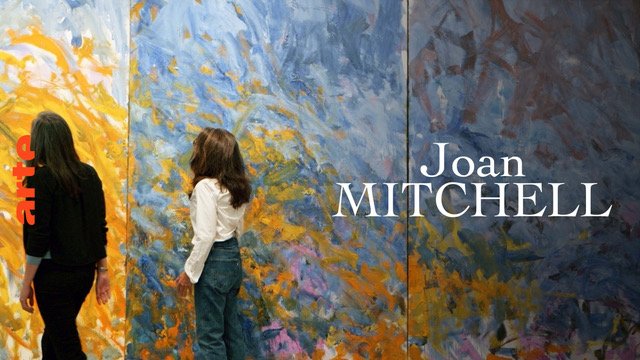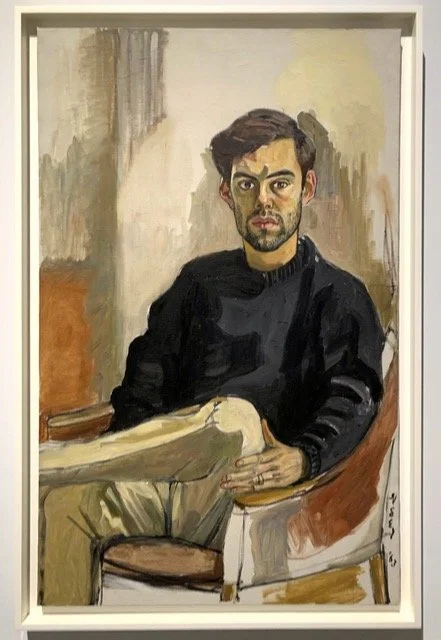Ham Butter
Newsletter 12.04.2022
Bienvenue and welcome back to Musée Musings. Your idiosyncratic guide to Paris and art. Reporting this month from (mostly) sunny San Francisco.
Before I begin, let’s give thanks to UNESCO for adding the baguette to its “intangible cultural heritage” list.
France’s President Emmanuel Macron, who got the news while in the United States, got onto Twitter (Twitter???) and celebrated by calling the baguette “250 grams of magic and perfection in our daily lives.” He included Willy Ronis’ photo of a boy and his baguette (which is almost as big as he is) in the Twitter post. (Figure 1)
Figure 1. A Boy and his Baguette, Willy Ronis, 1952
Honors aside, all is not well in baguette land. In an article (prescient, perhaps?) in the New York Times Food Section, about that quintessential French sandwich, Jambon Beurre (Figure 2)(which is always made on a baguette), which the author calls a Proustian ideal, we learn that since 2017, French people have been buying more hamburgers than jambons-beurre. Quel horreur (and also, how gross!).
Figure 2. Jambon Beurre from the New York Times, November 30, 2022
Here’s a suggestion. Next time you are in Paris and find yourself hankering for a fabulous take on this most unDagwoodian of sandwiches, go to Beaupassage on Blvd Raspail. Where you will find Thierry Marx La Boulangerie (Figure 3) and one of the best jambon-beurre sandwiches in town. While at Beaupassage, which opened in 2018, you will find lots of other delightful eateries to enjoy- among them Le Café Pierre Hermé, his first venture into sit-down dining and Certified Café, (formerly Percentage) the best coffee in town (seriously). Whether it’s a day of museums for you, Beaupassage is across the street from the Musée Maillol or a day of shopping, Bon Marché is only a seven minute stroll away, Beaupassage is definitely worth a visit.
Figure 3. Thierry Marx in front of Thierry Marx, La Boulangerie
Okay, where was I? Oh, right. The sequential reveal of the Advent Calendar I created from chocolates I brought home from Paris, has begun.
And, as I had hoped, the Thanksgiving turkey and fixins’ did what they were supposed to do - they lasted until November 30, an entire week! Beginning with turkey Reubens for Friday lunch and a repeat of Thanksgiving dinner, sans the timing problems, for Friday dinner. Soup was on the menu for a couple days. In the past I’ve always made turkey barley soup loaded with vegetables and cornbread on the side. But this year, inspired by the amazing leftover gravy (merci Kenji Lopez-Alt) and the bone broth I made after stripping the turkey carcass bare, I branched out and explored other soup possibilities. The Pho (pronounced FA, as I’m sure you know) was great. Just the right mix of sour and soothing. Not exactly the same as in the Vietnamese places that line Irving St. in San Francisco’s Sunset neighborhood. But good. The stuffing dumpling soup was a disaster, a goopy mess, a waste of delicious stuffing and precious broth. The first will be added to the post-Thanksgiving rotation, the other will disappear completely, never to be brought up again (well at least not by me).
Last week I wrote about Alice Neel whose work is now on view at the Pompidou. You may remember that I first talked Alice Neel nearly a year ago when I mentioned a three part series on Freakonomics Radio called ‘The Hidden Side of the Art Market’. Steven Dubner, the show’s host discussed Alice Neel in part 3 of the series, ”The Art Market is in Massive Disruption”. Listen to the entire series, if you have time, and definitely to part 3, for Alice Neel. You will learn about how much paintings by Alice Neel, who raised her sons in poverty, are selling for now and where all that money goes.
Alice Neel’s portraits are sometimes raucous, sometimes subdued examples of political and personal engagement. (Figure 4) This week’s review is on the abstract artist, Joan Mitchell. She is almost Neel’s exact opposite - a loner who knew that awful things were happening in the world, but didn’t want to become involved, didn’t want to be distracted.
Figure 4. Uneeda Biscuit Strike, 1936, Alice Neel
In September, my friend Julia Frey (whose book on Vuillard I reviewed last year) invited me to attend a premier at the Arts Arena in Paris of ‘Joan Mitchell: A Woman in Abstraction,’ a film which was made by Arte.tv, (Figure 5) in conjunction with this exhibition. It was in English when I saw it, but if you look for it online, it will probably be dubbed in French or German. The film includes interviews with people who knew Mitchell. One of those people is the much-beloved-in-France writer, Paul Auster. He spoke about Mitchell’s lover - Jean-Paul Riopolle, especially his over the top lifestyle. I enjoyed the film before I saw the exhibition, I enjoyed it again afterwards.
Figure 5. 'Joan Mitchell: A Woman in Abstraction’ Arte.tv
BTW while I was looking for the Arte.tv film on Mitchell, I stumbled upon one about Alice Neel. (Figure 6) In that film, we walk around Manhattan with her second son, Hartley (Figure 7) and his wife, who also take us to Neel’s apartment where she painted many of her portraits, which the family still owns. Here Neel’s first son Richard joins us. (Figure 8) He seems less happy to be here, perhaps because his years there were not as serene as his younger brother’s were.
Figure 6. Alice Neal Arte.tv
Figure 7. Hartley, Alice Neel’s second son
Figure 8. Richard, Alice Neel’s first son
Interestingly, although Paul Auster isn’t interviewed for the film on Neel, his wife, Siri Hustvedt, is. She didn’t know Neel personally (as her writer husband knew Mitchell), but she is a well known author (in her own right) and feminist. Her 2014 novel, The Blazing World, is about a female painter living in New York at the close of the 20th century, who believes that “she has been the lifelong victim of cultural misogyny.” Sound familiar? Never mind, happy December. Bisous, Dr. B.
Readers Comments for which I am always very grateful.
Dear Beverly, What a great piece on Alice Neel, thank you. Since I first saw her work in 2017 she has been my no. 1 inspiration and prime example. I am mesmerized by her work: the longer you look at these portraits the better they get. As a painter of people myself I aspire to her intensity and truthfulness. What is interesting to note is that the painting you show with the 'Nazis kill Jews' sign prominently in the middle (fig 3), was made in 1936. That is almost ten years before the rest of the world realized (or accepted) that truth. She really knew what was going on, and she was a wonderful person. Best regards from Amsterdam, Pieter www.athmer.gallery
Dear Beverly, Your Thanksgiving dinner sounds delicious! I'm especially intrigued by the brussel sprouts and the pumpkin pie. If we weren't leaving the US in two days I'd definitely make the brussels sprouts. On my list of things to try in the future is the Kenzi-Alt pie crust recipe. I used to really enjoy his articles when he wrote for Cooks Unlimited. Unfortunately, the only b.sprouts available in Israel are frozen and though I use them, they just don't roast up the same as fresh ones. sigh. Sharon, Haifa.







